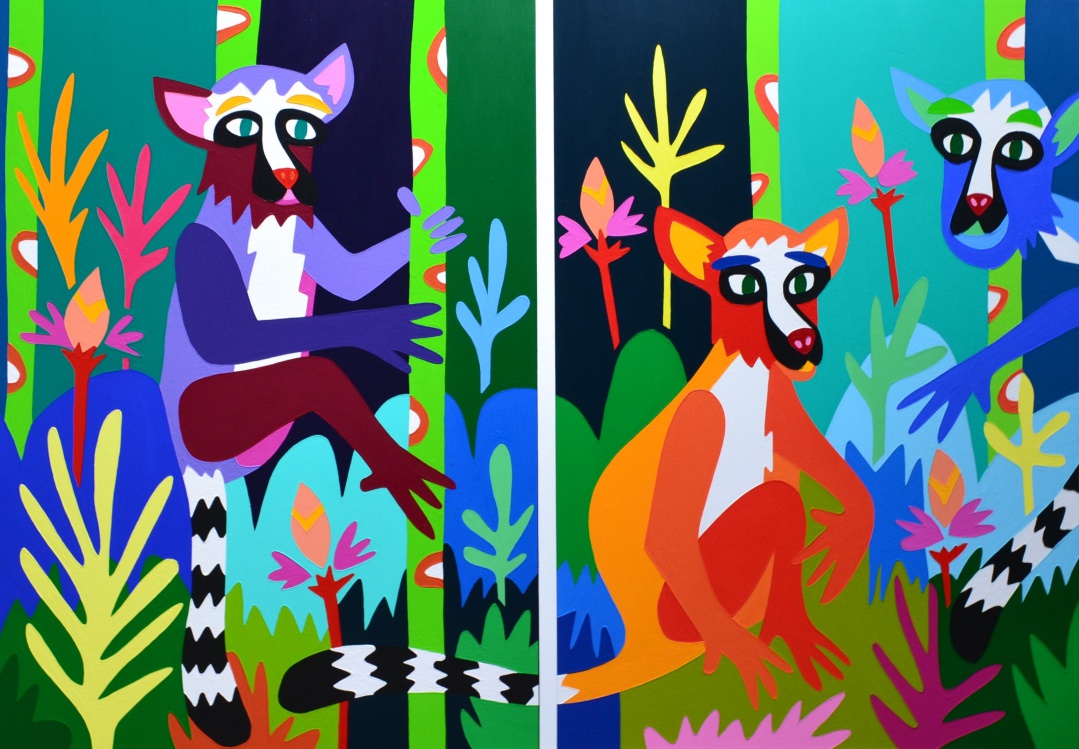Gonzalo shares with us that all lemurs are primates native to the island of Madagascar, where they evolved in isolation, developing unique characteristics.
With more than 100 different species, lemurs are known for their diversity and are classified into five major families:
– Lemuridae (true lemurs)
– Cheirogaleidae (mouse lemurs)
– Lepilemuridae (sportive lemurs)
– Indriidae (large lemurs)
– Daubentoniidae (aye-aye)
Their size ranges from 30 grams to 9 kilograms, and they display a great variety of colors and patterns in their fur. They are social animals, living in organized groups and showing remarkable intelligence and curiosity. Some species excel at jumping and climbing, and although habits vary by species, most are diurnal.
Lemurs are omnivores, feeding on fruit, leaves, insects, and small animals.
In particular, ring-tailed lemurs or lemur catta (Lemuridae family) have a diet specialized in fruits and leaves.
Gonzalo highlights:
“They show that they are very social, able to live in harmony and organize themselves in mixed groups. They are a true example of coexistence.
They love to bask in the sun in the mornings: they sit facing the sun, arms wide open, as if they were meditating.”
These primates communicate using a wide range of vocalizations—including screams, squeals, and grunts—as well as visual signals such as tail movements and body posture changes.
Ring-tailed lemurs spend more than a third of their time on the ground, more than any other lemur species.
Interestingly, lemurs are among the five animals that sleep the most in the world.
This ranking includes:
1. Koala
2. Sloth
3. Armadillo
4. Opossum
5. Lemur (sleeps between 16 and 18 hours a day)
What if we play at being lemurs?
Gonzalo suggests:
“Nature always gives us clear examples. This new artwork, when explored in the classroom, encourages children to engage in rest and meditation practices to reduce stress and anxiety.
It also fosters focus and emotional well-being by doing it together as a group.”
An invitation to observe, learn, and connect with nature… even from the classroom. Because sometimes, all it takes is looking at a lemur to remember what truly matters: living together, caring for each other, and finding moments of calm.

